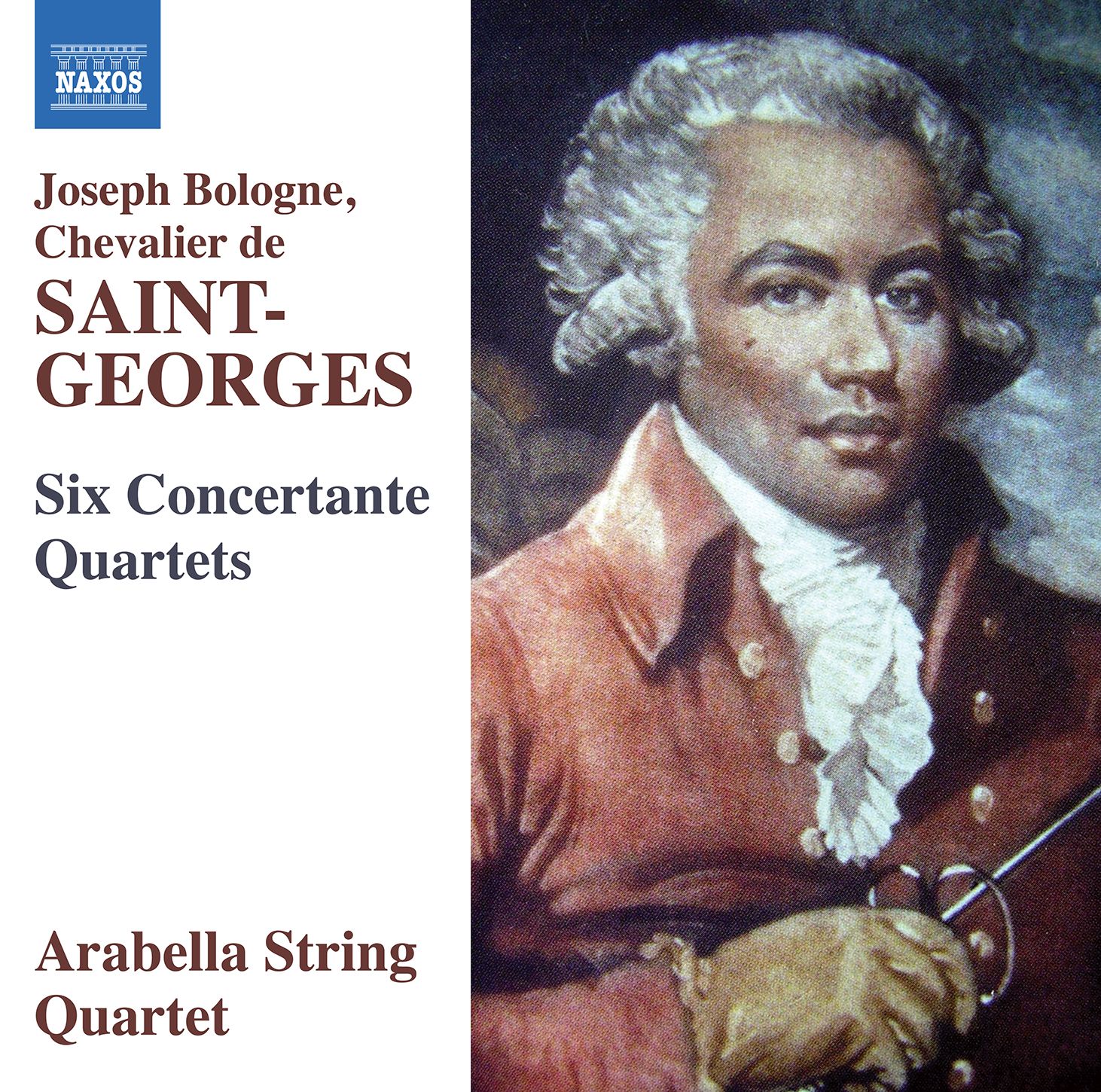Saint-Georges: Six Concertante Quartets
Do try this disc - it is positively revelatory!

Known for his activities a violin virtuoso and composer, Joseph Bologne, Chevalier de Saint-Georges was also known to be a brilliant swordsman. A true man of his time: a time in which the string quartet was still in its infancy in France in the 1770s.
Bologne's Concertante Quartets are small in scale they, but they offer fertile fields of exploration. Intimate nature of this genre, avoiding overt soloistic virtuosity and exploring chamber music timbres, amply demonstrating his rich lyrical gifts and a natural ability to delight performers and audiences alike.
This recprding came about through a collaboration betweem the Arabella String Quartet, Naxos and the specialist publishing house, Artaria Edition. The edition is edited by Allan Bradley. Fascinating to read about the revivification of Artaria Edition through collaboration with Naxos (here).
It is lovely to hear that he two violinists of the Arabella Quartet, Julie Eskar and Sarita Kwok, switch position regularly. I like the way this introductory video at one point suggests how the interactions between the two violins somehow might mimic Saint-Georges' other passion, fencing!:
To reflect this opposition, the quartets were recorded with the two violinists facing each other. The video also suggests that the 'concertante' element reflects the French ideal fo liberté, égalite, fraternité.
The cello has an enhanced role in these works in compoarison to many contemporary works. Sarita Kwok is right to point out that the chamber music reflects the more intimate side of Saint-Georges, as opposed to the virtuosity of his concertos.
Let's take the first movement of No. 6 as an example of Saint-George's music (one can hear that independence of the cello here too in Alexandre Lecarme's contributions, too). I hear this as a near-relative to the music of J. C. Bach (Johann Christian Bach, the so-called 'London' Bach) in its clear-cut, attractive melodies and its clean structure:
Textures are sometimes busy but never overcrowded: and there is a moment that seems pure Mozart, as if out of the overture for an opera buffa.
There is much contrast here: the two movements of the first Quartet prove that, with its joyous, again clean-cut first movement to its gracious, suave second movement.
All six Concertante Quartets date from 1777 - only one is in a minor key, the second G minor - for Mozart, one of the darkest keys, and clearly that is the case for Saint-Georges also, at least in the first movement, which casts its cloud over the finale, an "aria andantino". The sheer delight of the finale of No. 3 (C major) is miraculous.
It's clear that Saint-Georges has a real feel for the nature of the keys he writes for: No. 4 in F-Major is as bright and breezy as its key imples, with a positively sparkling finale while the G-Major No. 5 has a real sense of opera buffa busy-ness about its first movement and real levels of profindity in its second.
Do try this disc - it is positively revelatory!
Saint-Georges (Amazon link)